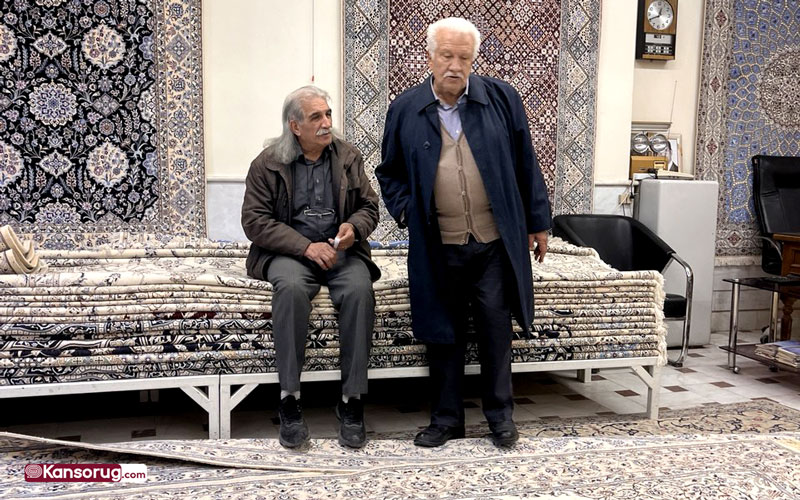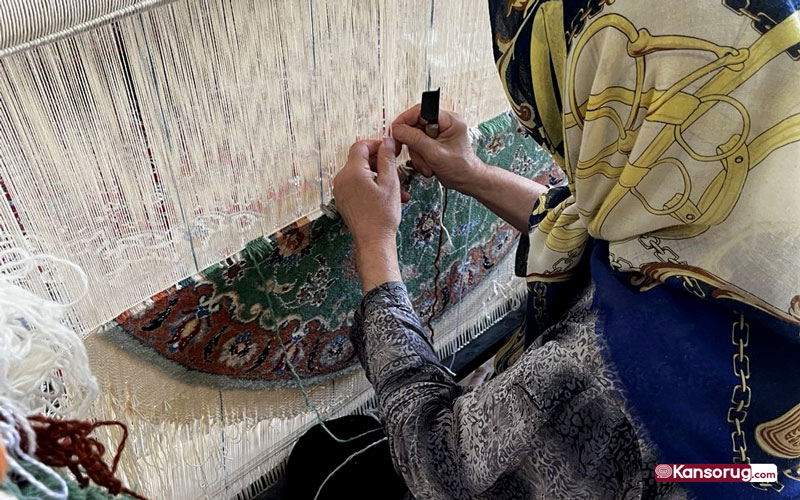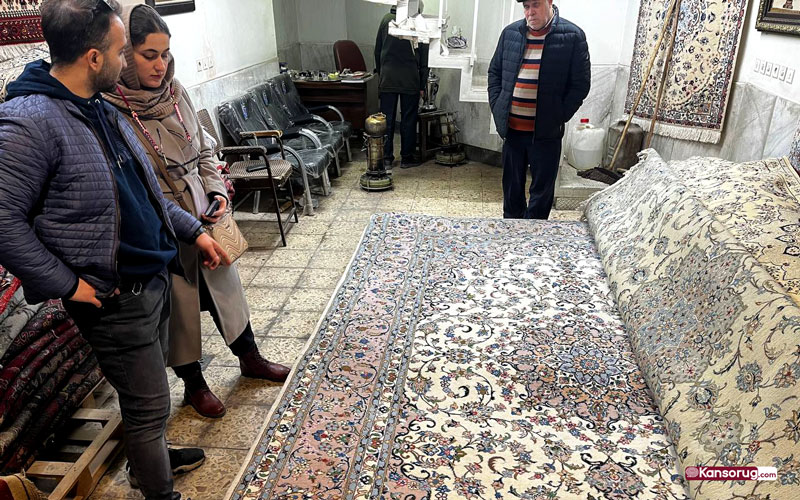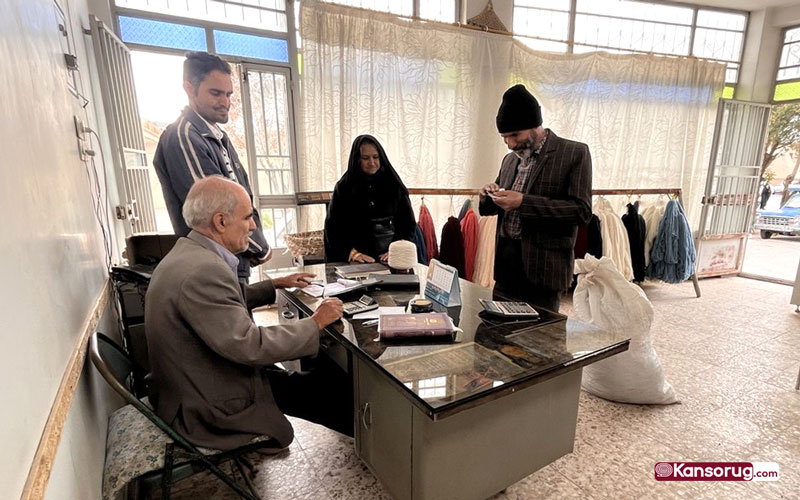Why Are Persian Carpets So Expensive? The Secrets Behind Their Value

Weaving a standard Persian carpet, such as a 6-square-meter rug, typically takes between one year and one and a half years to complete. The process can be carried out either in workshops, which are managed by workshop owners or companies and employ multiple weavers, or by independent weavers who set up looms in their homes. Regardless of the setting, weaving Persian carpets is a highly skilled craft. In this article, we have answered many of your frequently asked questions. By the end, you will know that: Why Are Persian Carpets So Expensive? How is the value of Persian rugs determined in the USA? What is the average cost of Persian rugs per square foot, and how much do they typically cost in Iran?
Weavers deserve fair compensation for their labor, yet various factors influence their pay. Among these, none is as intriguing as the methods used to identify authentic handmade carpets and determine their prices. There are two main approaches to valuing and pricing a Persian handmade rug. In this article, I’ll break it down in the simplest terms for those unfamiliar with this intricate process. We’ll explore why Persian carpets vary so much in price, what makes some most expensive Persian rugs, and whether their high price or luxury status is tied solely to branding or the process itself.
Let me answer why Persian rugs are so expensive and why most are so universally admired. This article will clarify why are Persian rugs so famous. Is it the materials they’re made from, the production process, or perhaps the unique techniques that add to their value? By the end of this, everything will become clear. Stay with me—I'm Bahador, and I’ll guide you through this fascinating journey.
In This Blog...
ToggleValuing Handmade Carpets: How Are Persian Carpet Prices Determined?
There are three main methods for evaluating and pricing Persian carpets:
Method 1: Independent Weavers Selling Their Carpets Directly

In this approach, weavers create their carpets independently and either bring them to market or invite an appraiser or buyer to their home for evaluation and purchase. For instance, imagine a 6-square-meter Nain carpet being appraised based on market trends, supply, and demand.
Several factors are assessed during this process:
- Size and knot density: The number of knots per square centimeter significantly impacts the carpet's value. A way for a Persian rug value calculator!
- Materials used: Does it feature high-quality silk or wool? How much of each material was used? made from finer yarns like silk and cotton can take longer to weave.
- Number of colors and designs: Is the design rare, intricate, simple, and more common?
- Time invested: More intricate patterns require longer weaving times.
- Weaver’s skill: Was the carpet woven by a highly skilled artisan or a less experienced weaver?
- Defects or imperfections: Issues like asymmetry, sizing discrepancies, or weaving errors can affect the carpet’s value.
The weaver may show their carpet to several appraisers before selling it to the one offering the best price. This "raw price" is determined before the carpet undergoes washing or finishing. Once sold, the carpet is sent to specialists for finishing processes, including trimming, re-knotting fringes, and expert washing with specialized materials to enhance durability, color stability, and visual appeal. The finished carpet is then introduced to the market, where a dealer or merchant adds their profit margin before selling it to customers.
In response to the question, "Why Are Persian Carpets So Expensive?" it’s important to note that most Persian carpets are quite affordable and economical, with only a select few falling into the very expensive category.
Summery: In this method, supply and demand determine the price, while initial costs play a fundamental role in setting the base price. Unlike other handmade rug brands worldwide, such as those from Pakistan or India, which are typically priced based on size or design, Persian rug weavers or quality-conscious producers value their rugs based on factors such as the weaver's wages, the cost of raw materials, the quality of the weaving, the weaver's skill, the chosen design, the time required for weaving, dimensions, and similar considerations. It is impossible to predefine the price of a Persian handmade rug, which is why rugs from various regions of Iran usually cover a price range from affordable to luxurious and antique.
Method 2: Weaving Under Commission or Workshop Conditions

The seller provides details about the handmade rug and its history, and the buyer makes a decision based on the evaluation.
This method applies when a workshop employs the weaver or works from home under the supervision of a master weaver or producer. Here, the producer provides all the materials and equipment, and the weaver is paid a fixed wage for their labor. The producer bears the costs and risks associated with materials and potential defects in such cases.
Governmental and non-governmental organizations in Iran, such as the National Carpet Center and local weavers' unions, regulate the pricing of raw materials and carpets. However, the market remains highly sensitive to pricing. Overpricing can hinder a carpet's circulation in the market while underpricing can undervalue the weaver’s effort and skill.
Summery: One of the common methods of producing Persian carpets is employing the weavers along with a repair specialist or carpet washer in a workshop setting. Even in this method, the skill of the weaver, the supervision of the process, and the reputation of the brand owner or producer remain critical. Names associated with renowned handmade carpet brands, such as Habibian in Nain, Hossein Sajadi in Isfahan, Azimzadeh in Tabriz, Zolanvari in Gabbeh, and Erami in Qom carpets, are often heard. This is why you may find the signature or brand of the producer at the top or bottom of a carpet.
Method 3: Antique and Luxury Carpets

Antique and high-value handmade carpets are typically evaluated by experienced and specialized experts. Mr. Habibian Naini in his store
Antique and luxury Persian carpets tell a different story. Take, for example, a Qom silk carpet—a symbol of luxury in Persian rug-making. These carpets are often entirely silk or at least 70-80% silk and feature unparalleled intricacy and quality. Pricing such carpets requires an entirely different approach.
In Qom, groups of highly experienced weavers and producers, some with over 50 years of expertise, gather weekly in the old bazaar to evaluate these exquisite carpets. Buyers and sellers meet in this unique setting, akin to a salesroom or showroom. The weaver explains the carpet’s weaving duration, materials, and craftsmanship, while experts meticulously examine its design, dimensions, and overall quality before determining a fair price.
This process ensures that luxury carpets are neither overpriced, alienating buyers, nor underpriced, undervaluing the weaver’s efforts.
Summery: Some Persian carpets fall into the categories of classic, antique, and ultra-luxurious pieces. Their evaluation and pricing are based on expertise, design, materials, and principles that fairly reflect domestic and international market values. Many carpets produced in Iran are so intricate in their valuation that a team of experienced experts is often required to assess their true worth, issuing certificates and documentation similar to pricing an art piece in a gallery—an approach highly sought after by collectors. The perception of Persian carpets as extremely luxurious or expensive often stems from pieces crafted with exceptional skill, using the finest materials under the supervision of renowned weavers and producers.
Challenges and Realities for Weavers
Unfortunately, due to various challenges in bringing handmade Persian carpets to the global market, weavers’ wages have reached some of the lowest levels in years. While weaving was once one of the most lucrative traditional crafts, today, most weavers earn only $4 to $8 daily for 10 hours of labor. This is especially concerning given the physical toll weaving takes, including spinal issues, neck strain, arthritis, and long-term hand and finger problems.
Despite these challenges, weavers continue to produce these masterpieces, preserving the art and heritage of Persian carpet-making as a means of livelihood.
From Design to Completion: The Journey of a Persian Carpet

A weaver is buying colored wool, silk, and cotton from a traditional Nain handmade carpet raw material shop.
Creating a Persian carpet begins with selecting a design that aligns with market preferences. Materials are purchased upfront to ensure consistency, as using different batches of dyed wool or silk can result in color variations after washing. The weaving process itself requires a minimum of 8-10 hours of daily work and can take 1-2 years for a 6-square-meter carpet, depending on the weaver’s skill and speed.
Family members or friends may assist the weaver to expedite the process, but careful planning and attention to detail are crucial to achieving a flawless final product. After the weaving is completed, the carpet undergoes finishing processes, including expert washing and trimming, to ensure its beauty and longevity before it reaches the market.
Last Line of Why Are Persian Carpets So Expensive
Like many traditional and authentic crafts worldwide, Persian handmade carpets are governed by their principles and rules. A single close encounter with a Persian carpet is enough to reveal its unparalleled value compared to other woven works globally. These carpets undergo a meticulous process from creation to reaching your home, crafted by weavers deeply committed to producing pieces that not only stand the test of time but also bring the rich and profound stories of Middle Eastern and Persian (modern-day Iran) culture into your space—a heritage that generations before you and us have cherished.
Renowned for their exceptional quality and prestige, Persian handmade carpets quickly transform into investments for generations. Unlike other handcrafted textiles, every knot in a Persian carpet carries a unique story, giving it unmatched character and soul. Their beauty not only enhances the atmosphere of your home but also captivates the eyes of every guest who steps inside.
In this article, we’ve explained the answer to Why Are Persian Carpets So Expensive, or at least it seems that way! And why certain handmade Iranian carpets are highly valued and how Persian handmade carpets are priced. Using simple language, we’ve broken down the logic and factors behind their pricing. If you have any questions, please don’t hesitate to contact us—we’re here to guide you for free. And, of course, we always welcome your comments and feedback!
Please rate Stellar
Your page rank:
